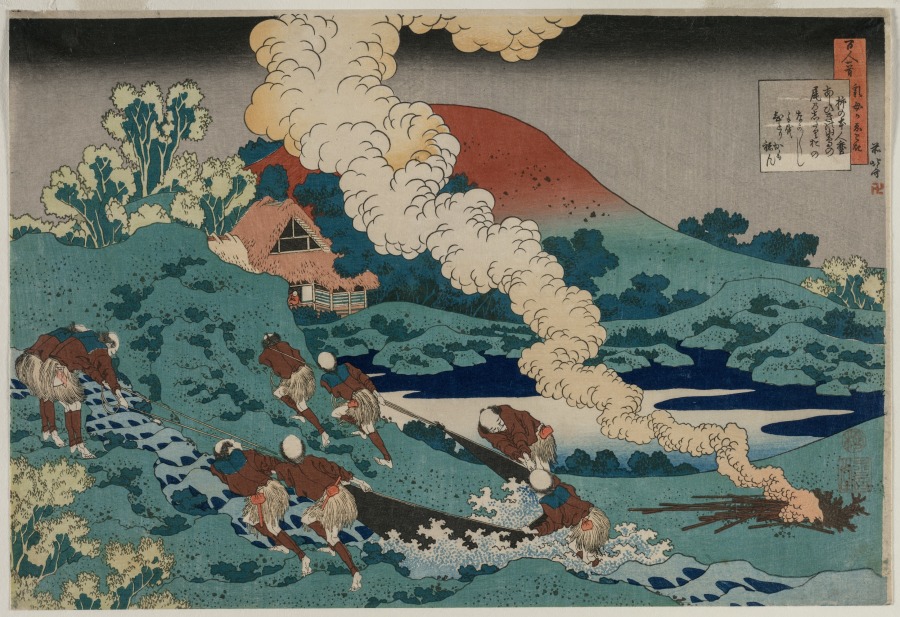| schema:description 11 | "inscription: Poem: Ashibiki no/ yamadori no o no/ shidari o no/ naganagashi yo o/ hitori ka mo nemu
あしひきの 山鳥のをの しだりをの ながながしよを ひとりかも寝ん...(more)" |
| schema:description | "wall_description: Hokusai designed this print series from the perspective of a confused nurse attempting to illustrate classical poetry, but missing the subtle allusions. This interpretation creates a comical disconnect between poem and image. The poem reads:<br><br><em>The wild hill pheasants<br>Drag their feet and drag their tails,<br>Splendid though they be,<br>Through this long, long weary night,<br>Like me, laying here alone. <br><br></em>Considered a god among poets, Kakinomoto no Hitomaro (about 660–739) wrote of an emotionally tiring night. The nurse thought instead of the physically exhausting work of fishermen dragging a net upstream. Smoke billows across the scene, directing our attention to a figure, perhaps the nurse, in the distant house....(more)" |
| schema:description | "culture: Japan, Edo Period (1615-1868)" |
| schema:description | "type: Print" |
| schema:description | "collection: Japanese Art" |
| schema:description | "inscription: Signature: Zen Hokusai 前北斎
Artist's Seal: Manji 卍
Publisher: Nishimuraya Yohachi (Eijudo 永寿堂)
Censorship Seal: kiwame 極...(more)" |
| schema:description | "measurements: Sheet: 25.8 x 37.8 cm (10 3/16 x 14 7/8 in.)" |
| schema:description | "creditline: Bequest of Edward L. Whittemore" |
| schema:description | "id: 111656" |
| schema:description | "tombstone: Poem by Kakinomoto no Hitomaro, from the series One Hundred Poems by One Hundred Poets Explained by an Old Nurse, 1835-36. Katsushika Hokusai (Japanese, 1760-1849). Color woodblock print; sheet: 25.8 x 37.8 cm (10 3/16 x 14 7/8 in.). The Cleveland Museum of Art, Bequest of Edward L. Whittemore 1930.190...(more)" |
| schema:description | "technique: color woodblock print" |

